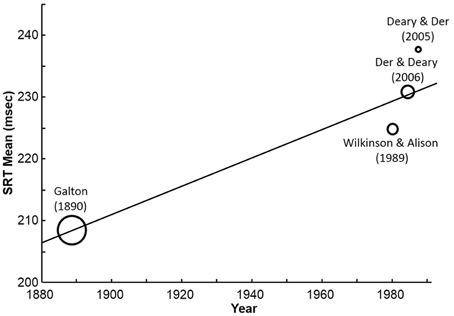Source: Discontinuous progress in history: an update | LessWrong 2.0, by Katja Grace
We recently finished expanding this investigation to 37 technological trends. This blog post is a quick update on our findings. See the main page on the research and its outgoing links for more details.
We found ten events in history that abruptly and clearly contributed more to progress on some technological metric than another century would have seen on the previous trend. Or as we say, we found ten events that produced ‘large’, ‘robust’ ‘discontinuities’.
…
Here is a quick list of the robust 100-year discontinuous events, which I’ll describe in more detail beneath:
- The Pyramid of Djoser, 2650BC (discontinuity in structure height trends)
- The SS Great Eastern, 1858 (discontinuity in ship size trends)
- The first telegraph, 1858 (discontinuity in speed of sending a 140 character message across the Atlantic Ocean)
- The second telegraph, 1866 (discontinuity in speed of sending a 140 character message across the Atlantic Ocean)
- The Paris Gun, 1918 (discontinuity in altitude reached by man-made means)
- The first non-stop transatlantic flight, in a modified WWI bomber, 1919 (discontinuity in both speed of passenger travel across the Atlantic Ocean and speed of military payload travel across the Atlantic Ocean)
- The George Washington Bridge, 1931 (discontinuity in longest bridge span)
- The first nuclear weapons, 1945 (discontinuity in relative effectiveness of explosives)
- The first ICBM, 1958 (discontinuity in average speed of military payload crossing the Atlantic Ocean)
- YBa2Cu3O7 as a superconductor, 1987 (discontinuity in warmest temperature of superconduction)
…
It looks like discontinuities are often associated with changes in the growth rate. At a glance, 15 of the 38 trends had a relatively sharp change in their rate of progress at least once in their history. These changes in the growth rate very often coincided with discontinuities—in fourteen of the fifteen trends, at least one sharp change coincided with one of the discontinuities. If this is a real relationship, it means that if you see a discontinuity, there is a much heightened chance of further fast progress coming up. This seems important, but is a quick observation and should probably be checked and investigated further if we wanted to rely on it.
…
Discontinuities were not randomly distributed: some classes of metric, some times, and some types of event seem to make them more likely or more numerous. We mostly haven’t investigated these in depth.

